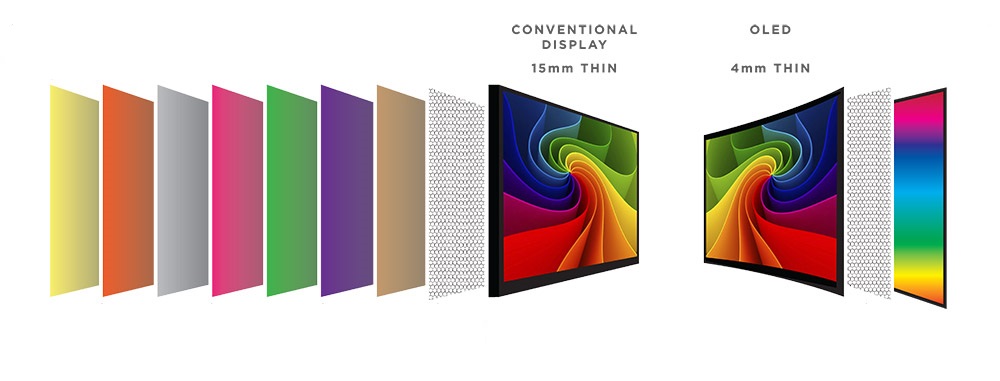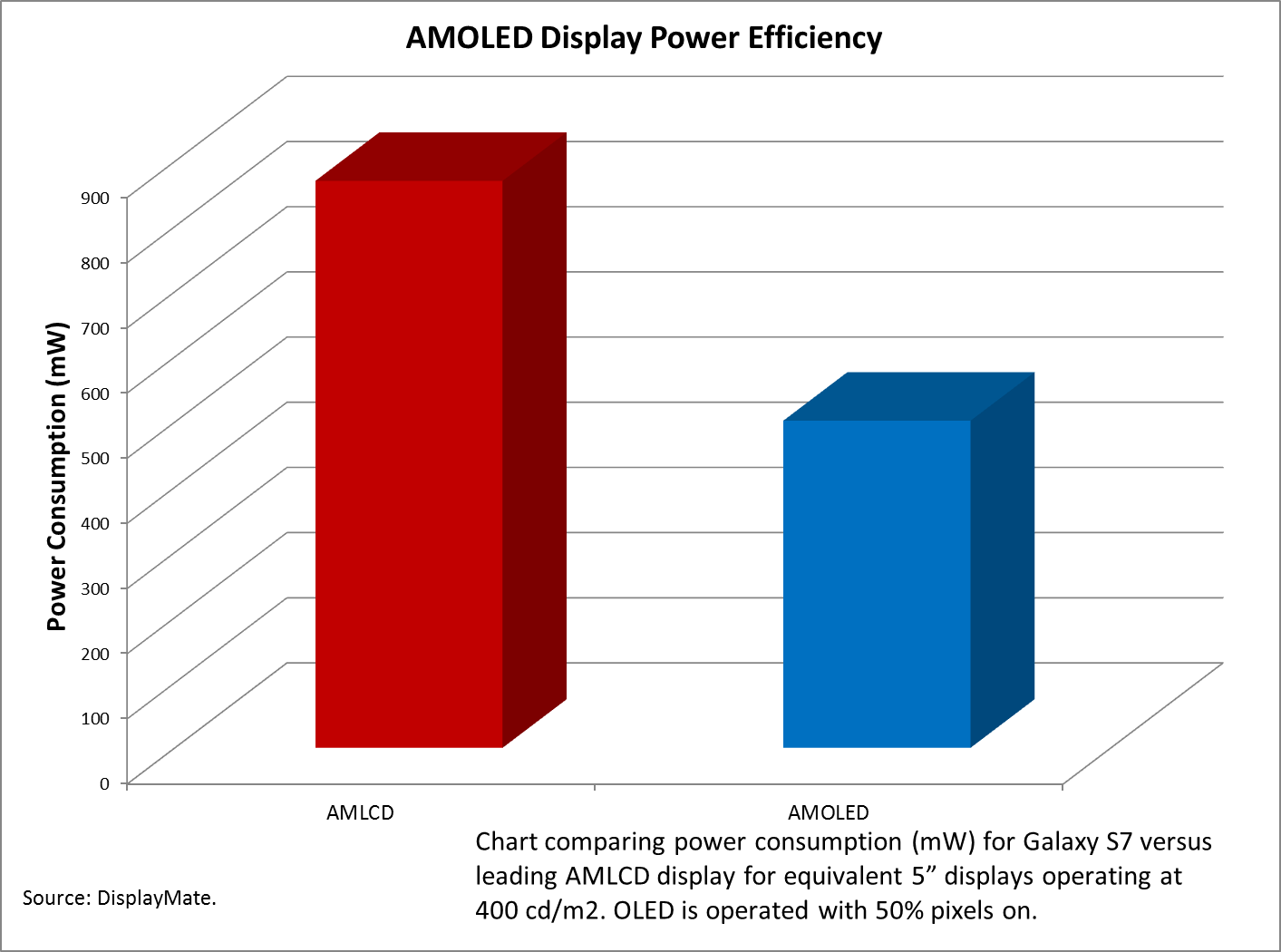The Display Market
The Display Market
Displays are essential for a wide variety of consumer electronics products, such as mobile phones, wearables, IT and TVs as well as virtual reality, automotive and signage. Compared to LCDs, OLEDs provide markedly improved performance features. OLEDs are thinner, lighter and more attractive than LCDs, and offer much faster response times, wider viewing angles, higher contrast ratios and brighter, more saturated colors – for a more enjoyable viewing experience. With Universal Display’s proprietary UniversalPHOLED® technology, OLEDs can also be more energy-efficient than LCDs.
OLEDs are already cost-effective for mobile applications. In smartphones, OLEDs have already proven themselves to have cost parity in a like-for-like basis with LTPS high-end LCD screens. As illustrated below, OLEDs have fewer processing steps and are also less component intensive than today’s LCDs, notably with the elimination for the need of a backlight (OLEDs are self-emissive). As OLED manufacturers continue to gain experience, OLED production yields are improving and larger-scale equipment is coming on line. As a result, production costs will continue to decrease – ultimately enabling even large-sized OLEDs to outperform LCDs on a cost basis.
OLED Display Market Drivers
Lower Power Usage*
- RED Phosphorescence reduces power consumption by 25%
- Add GREEN: 45% cumulative reduction
- Add BLUE: 75% cumulative reduction
*Enabled by PHOLEDs
Superior Aesthetics
- Improved image quality
- Thin and Light
- 180 degree viewing angle
- Infinite contrast ratio and an infinite dynamic range
- Real-time video speeds – excellent for 3D
- Self-emissive display
- On- cell touch without sacrificing fill factor
- Low UV output
- Flexible
More Cost Effective
- Fewer manufacturing process steps
- Low cost bill-of-materials
- No backlight required
- No color filter required (for RGB side-by-side)
- No liquid crystal required
- Reduced driver IC costs
- Enables non-glass substrates



